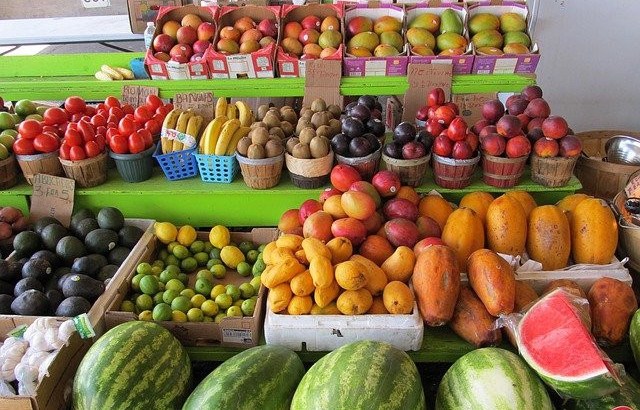Have you ever experienced unexplained pain in your thighs, arms, neck, or any other place in your body where muscles reside? Does it come out of nowhere, or start while you’re using those muscles a bit more than usual? Does it make it hard to relax? Well, there is a chance that that is due to poor muscle elasticity. In this article, we will be looking at foods to improve muscle elasticity.
Obviously, there may be another reason for such pains, but, if you’ve tried everything else, and aren’t sure what’s causing it or what to do about it, one thing you can try to do is improve your muscle elasticity. There are many ways to do this, but some that are helpful, and some that are actually known for helping. Some of them are specifically for helping to improve muscle elasticity, and some, although not specifically for helping to improve muscle elasticity, have shown some great results in the matter as well.
So, today we’re going to be discussing ways to help improve your muscle elasticity, as well as why having good muscle elasticity is important.
But first, let’s find out exactly what muscle elasticity is.
What is Muscle Elasticity?
Muscle elasticity is exactly what it sounds like.
It’s the elasticity of your muscles, which in other words (or in technical terms), muscle elasticity is the natural ability of your musculoskeletal system to work correctly, and move normally.
Every move you make uses your muscles, and your muscle elasticity is what allows you to move easier, and move around for longer periods of time without pain, as well as other problems, potentially starting up or flaring up your muscles.
Muscle elasticity is basically what determines how you move, and how well you move. Actually, another term people use when talking about muscle elasticity, as well as a term you may be more familiar with, and you may possibly know better than the term “Muscle Elasticity”, is “flexibility”.
When you have good muscle elasticity, you move around easier, and can move around for longer periods of time without any problems (including pain, stiffness, weakness, etc.).
So, now that we know what muscle elasticity is, let’s talk about a frequent mistake people make, which is mixing up muscle elasticity, and skin elasticity. These two things are often mistakes for each other, when really they are two separate things, that have a very big difference between each other.
So, let’s talk about that now, and discuss what the difference between the two things actually is.
What is the Difference in Muscle Elasticity from Skin Elasticity?
The difference between muscle elasticity and skin elasticity is simple… One is internal, and other is external.
Your skin is actually your largest organ, and one of the few organs that you can see without special medical machinery (such as MRI, X-rays, etc.), as it’s one of the few organs that resides on the outside of your body.
Your muscles reside inside of your body. You have different muscles through out your entire body, and every time you move, you use your muscles. Without muscles, your body would not be able to move very well, at all. You use your muscles every time you walk, every time you lift something, every time you talk. Without muscles, you wouldn’t be able to function, or do anything really, including the most simple things. You use your muscles when you do literally everything in your life, and the thing that helps you move easier when you’re doing all of those things, is your muscle elasticity. That is what helps you move well, the muscles that are on the inside of you body.
So, your skin elasticity is the elasticity of your skin, something that’s on the outside of your body, while your muscle elasticity is the elasticity of your muscles, on the inside of your body. That is the difference between muscle elasticity and skin elasticity at a very basic level.
Why Muscle Elasticity is Important?
Muscle elasticity, though very important, is not something many people consciously think about in their day to day life. But the truth is, it is something that incredibly important for everybody. Muscle elasticity is important, as it contributes to helping your body move.
In every move you make, muscle elasticity matters. It can determine how your body moves, and how your muscles feel after you’ve been moving around for a bit.
If you have poor muscle elasticity, chances around after working out, lifting a significant amount of weight, or even just moving around, you will be in some pain. The pain severity varies, depending on the person, and just how poor their muscle elasticity is, but in some cases, it can be very painful.
When you have good muscle elasticity, you can move around easier, and move around more, without pain flaring up in your muscles. Muscle elasticity is important in day to day activities, and not everybody realizes that. But it’s something that is used in every move you make, so it is very important to have good muscle elasticity, especially if you move around a lot.
Now that we’ve discussed why having good muscle elasticity is important, let’s discuss ways that you can improve your muscle elasticity.
How to Improve Muscle Elasticity?
There are many different ways out there to improve muscle elasticity, but many people aren’t aware of most of them. So, if you’re looking for a way to improve your muscle elasticity, you’ve come to the right place.
Here is a list of different things you can do that are either specifically to help muscle elasticity, or at least known to help muscle elasticity.
1. Kneading
This is a technique that is used to increase muscle elasticity. This technique involves slowly pulling and squeezing areas where muscles are. This loosens it up, and definitely helps improve muscle elasticity.
Tip: Here are the Best Warming Backrest Massagers
with kneading functionalities.
2. Skin Rolling
This is a technique that involves picking up and rolling skin in between your fingers and thumbs. Although this sounds like something used specifically for improving skin elasticity, it actually helps muscle elasticity as well.
Tip: For example, the Sharper Image Total Hand Compression Massager.
3. Wringing
This is a technique where soft tissues are pulled from either side of the treatment area to the center in opposite directions using flattened hands and fingers. This helps to increases blood flow, and raise muscle temperature, which, in the long run, can help improve muscle elasticity.
4. Foods You Eat/Your Diet
Yes, it’s true. The foods you eat and the nutrients you get in your diet contribute to your muscle elasticity, and the condition of it (whether it’s good and strong, or poor and weak).
Now that we’ve discussed things you can do to improve your muscle elasticity, and we learned that what you eat/the foods in your diet actually have an impact on your muscle elasticity, and certain foods actually help improve it, let’s discuss that more.
Let’s dig deeper into that, as saying food can help improve muscle elasticity is so broad. So, we’re going to list and talk about some specific foods that are known for improving muscle elasticity.
So, let’s get started.
15 Foods to Improve Muscle Elasticity
1. Avocados
One more the most known nutrients to help build muscle elasticity is protein, and although you would not get as much protein from an avocado as you would eating a piece of meat, it’s still a source of protein, if you either don’t like meat, poultry, and/or seafood, or don’t feel like eating meat, poultry, and/or seafood.
2. Blueberries
This one might seem strange, and not like something that could help improve muscle elasticity, but it actually makes sense that they would, since blueberries are a fruit that has many anti-inflammatory properties, which can help muscles recover, as well as prevent sore muscles and joints.
3. Watermelon
Watermelon has been found to enhance athletic performance, as well as reduce muscle soreness, meaning it can help improve muscle elasticity. This is due to the amino acid L-citrulline, which watermelon contains.
4. Oranges
Another thing that really helps improve muscle elasticity is vitamin C, which of course, oranges are full of. When people think of vitamin C, they typically think of oranges before anything else.
So, one food to consider keeping on hand as a healthy snack, especially if you’re trying to increase muscle elasticity, is oranges.
5. Ginger
Ginger is known to help with circulation in the body. It has a positive effect on the circulatory system, as it helps keep the system works properly, and your circulation remains regulated, working the way that it’s supposed to. This, in turn, helps improve muscle elasticity.
Good circulation means stronger and better muscle elasticity.
6. Cinnamon
Although it might seem weird that a spice would help with improving muscle elasticity, it’s true! Cinnamon is a spice that can ease muscle pain, and ease muscle pain can help with improving muscle elasticity. So, therefore, cinnamon helps with improving muscle elasticity.
7. Turmeric
This is a super herb, and it works like ginger does. It is not only anti-inflammatory (like blueberries), but it also helps regulate and improve circulation, which, in turn, helps improve muscle elasticity.
8. (Red) Meat
As I said when I was talking about how avocado can help muscle elasticity, protein is known for improving muscle elasticity. When people think about protein, they tend to think about meat before anything else, and that’s because meat holds the most protein out of just about every other food. It is a main source of protein. So, meat is a great thing to eat if you are trying to improve your muscle elasticity.
9. Chicken
Yet another food that improves muscle elasticity due to the protein it holds inside of it.
10. Fish
Seafood is yet another source of protein, in case you don’t like meat and/or poultry, but are still looking for a source of protein. Seafood is a great way to get protein, and like I said earlier a few different times, protein is a nutrient that improves muscle elasticity, therefore, seafood is a great way to improve your muscle elasticity!
11. Tofu
In case you need protein, but are a vegetarian/vegan, or just aren’t a huge fan of meat, poultry, and/or seafood, this is your best bet in getting the protein your body needs, both with a goal of improving muscle elasticity, and just getting protein into your body, as it something your body needs to remain it’s healthy self.
12. Beans
Just like avocados, this is a way to get protein without meat. It’s what many makes love beans.
13. Milk
Though not a food, milk is a great thing to increase your intake of, and get more of it into your body, in order to increase muscle elasticity.
14. Grape Juice
Yes, grape juice can actually help increase muscle elasticity. Another thing that you drink, grape juice has lots of health benefits, which, in the long run, could help improve muscle elasticity.
Grape juice can improve cardiovascular health, it can reduce cancer risk, and it can improve joint health. It can potentially do all of those things. It has all of those benefits, as well as a handful of other ones.
15. Water
And finally, we have the most basic of all substances, and yet another thing you drink instead of eating… Water.
Increasing your water intake, though not the only thing you should be doing if you want drastic results, is a great way to improve muscle elasticity as well.
Tip: Have you heard about the health benefits of Shungite Water?
These are just some of the foods that can help improve muscle elasticity. If you’re trying to improve yours, try some of, all of, and any of the tips, tricks, and techniques I listed above under “How To Improve Muscle Elasticity”, or try eating any of these foods.
Generally speaking, there’s no risk to doing these things (besides if you have a food allergy, so obviously, stay away from any foods on that list that you cannot have, due to an allergy or other reason), so if it doesn’t work for you, at least you will have tried.
Conclusion
In conclusion, although people don’t always realize, muscle elasticity is very important for your day to day life, as it contributes to every move you make during the day, from start to finish. So if you feel like your muscle elasticity isn’t as good and strong as it should be, try listening to a few, or all, of these tips, try out a few, or all, of these techniques, and try eating some, or all, of these foods, and you should be on your way to better, stronger muscle elasticity.
Thank you for reading, let me know if you have any questions!






















